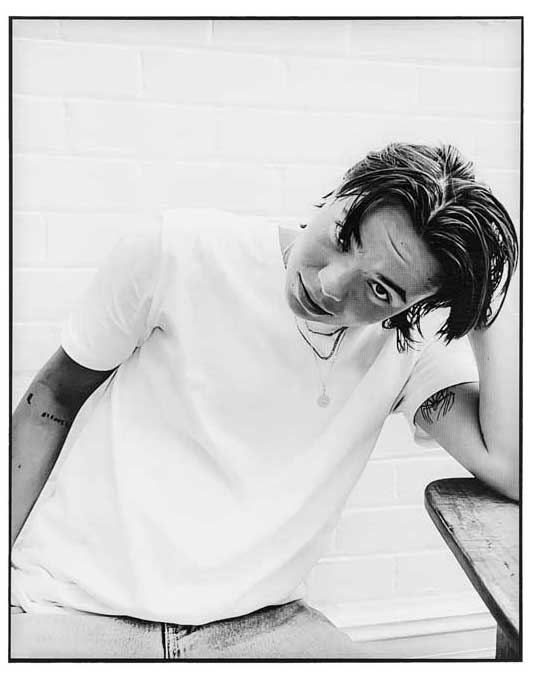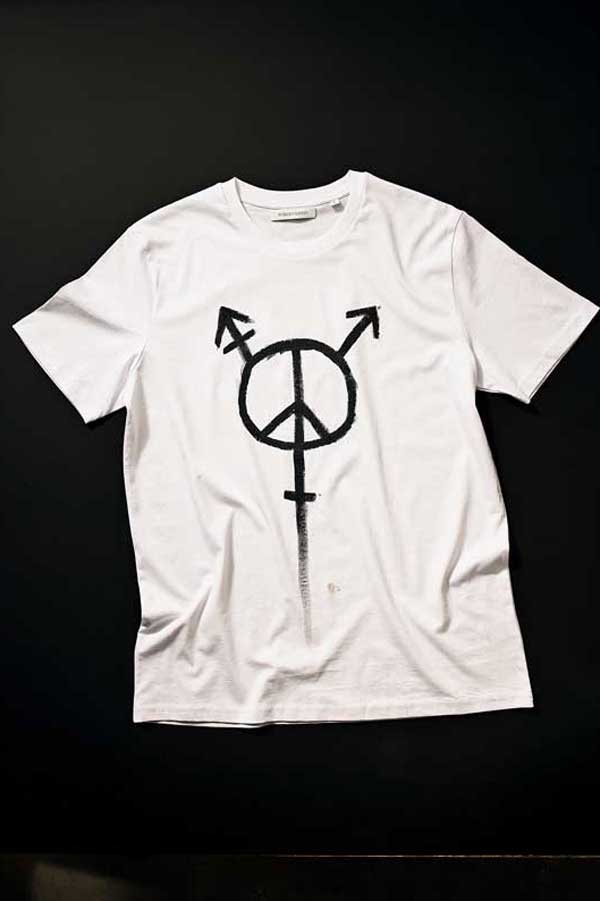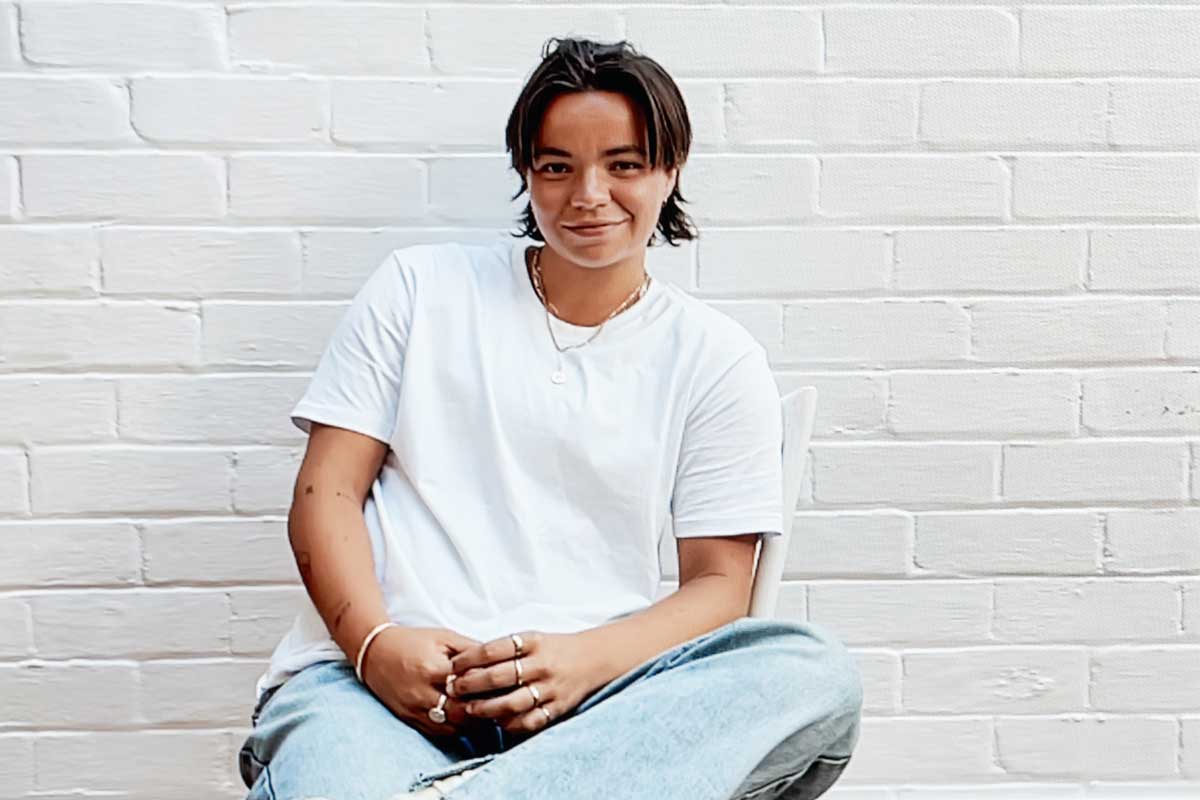“There are people who couldn’t possibly have dreamt of the privileges that I have as a trans person and actor,” says Zoe Terakes, 21, of navigating the trappings of success concomitant with shattering glass ceilings. Terakes, who identifies as non-binary transmasculine, says their story is part of a rich and chequered shared history, with today’s stars lighting a path that was forged by those who came before them.
“I’m very palatable. I am white, I am able-bodied and I am a trans person who can pass as anything,” Terakes continues. Even so, being cast alongside Nicole Kidman and Melissa McCarthy in Amazon Prime’s new drama “Nine Perfect Strangers” is an impressive feat for a seasoned actor, let alone one in the foot-hills of a star-bound track. “I had to pinch myself so many times because they’re my idols,” Terakes says of working with Kidman and McCarthy on the series, which was filmed in Byron Bay during the pandemic in 2020. “They’re so extraordinary to watch as actors and they work with such precision and dexterity, but also freedom and fluidity and looseness. It’s so exciting to watch.”
The dreamlike experience Terakes describes is far from the world the actor inhabited just five years ago, when their identity and passion were under wraps. Of acting, Terakes says, “I felt embarrassed that I wanted to because I didn’t see myself anywhere.” Seeing Angela Betzien’s play “The Hanging”, directed by Sarah Goodes, changed things for Terakes, precipitating roles in the ABC TV series “Janet King” and Australian productions of Arthur Miller’s “A View From the Bridge” and Lucas Hnath’s “A Doll’s House, Part 2”. “That was the moment,” Terakes remembers, when they realised, “I can’t pretend I don’t want to do it anymore.”

A series of comings out — both personal and professional — followed. At the age of 17, Terakes revealed they were gay. “I definitely felt a shift in the roles I was seen for,” they say. That includes the 2020 Australian film Terakes starred in, “Ellie & Abbie (And Ellie’s Dead Aunt)”, a high school rom-com about coming out. Two years later, at age 19, Terakes came out as trans, going against advice to hide their identity so as not to limit work. “It would be like not disclosing the colour of my skin,” says Terakes. “It’s just a part of me.” But the actor admits this second revelation was harder, with higher stakes. “When you come out as gay, everyone knows what it is,” Terakes reasons. “When you come out as non-binary or transmasculine, you have to explain your entire existence to people, which is exhausting.”
The television series “Wentworth”, in which Terakes plays Reb, a trans man jailed for a robbery that was to fund his top surgery, engendered a shift in Terakes. They finally felt secure in their skin. “I needed to play a character who had been feeling this way for years, so it was really a baptism by fire,” they say. “You’re thrown into the deep end of your gender, and I’d only been sitting with it for a year and a bit myself.”
Cutting their hair for the role gave outsiders a familiar “masculine” signifier and, more importantly, was a personal affirmation: the cut perfectly framed their epicene beauty. “There he is!” Terakes’ hair and makeup artist declared after the chop. “It was validating in a way that I’d never been validated on set before,” Terakes says. Their outside appearance had moved closer to what was inside.
When it comes to authentic trans storytelling, there has been progress in recent years (and Australians are blazing the trail), however, Terakes notes that these stories are still relatively rare. So, what do they make of the industry’s current talk of “diversity”, “inclusivity” and “representation”? “If you are having trans people, people of colour, differently abled people on your set, and the set is unsafe and people aren’t versed in pronouns and you don’t have hair and makeup and costume people who can work with said diverse performer, that’s pretty backwards,” Terakes explains.

The repercussions translate onscreen. “It’s really important to have roles where a person’s transness is at the centre of the story,” they continue. “But I would also like to play a person who happens to be trans, where their transness is neither here nor there, just as a person’s cisness is neither here nor there.” Casting people with lived experience is essential to this, they add. “People’s lives are on the line because people’s understanding of these people is on the line.”
Fortunately, Terakes has role models to turn to; they count fellow actors Kate Box and Marta Dusseldorp as confidantes. “I got so lucky that really young I landed in the pockets of some of the most extraordinary female actors,” Terakes says. “They felt like handlebars for me to hold onto because it’s such a big and scary industry.”
The filmmaker Wes Anderson and the showrunners Ryan Murphy and Joey Soloway are among the changemakers Terakes dreams of working with. It’s thanks to creators like them that we’re starting to see different faces in films and on television. “It’s not going to feel like it’s changing fast enough, but it’s absolutely changing,” Terakes says. “I am so grateful that I am coming up in a time where that change is happening.
A NOTE ON THE PHOTOGRAPHY: At the time T Australia commissioned this portfolio, much of the country was in lockdown. As such, our portrait photographer, Kelly Geddes, undertook T Australia’s very first remote shoot, via Facetime and Zoom. Geddes revelled in the challenge, using screenshots and photos of her computer screen to capture the scenes, the latter technique producing some of her favourite pictures. “They had a natural and raw quality to them,” she says. The files were sent to the darkroom service Blanco Negro, where they were hand-printed from a digital enlarger, toned in the darkroom as silver gelatin prints and then scanned for publication as black-and-white images. Each subject wears a T-shirt by the Australian label Nobody Denim; the same style appears in flat lay photographs throughout the portfolio. In these, the T-shirt serves as a “blank canvas”, altered by the subjects in a way that represents the legacy they hope to leave.




 "I believe trans folks get a bad rap. I believe we are often perceived as angry, or spiteful, or overly PC. And I believe those perceptions are fundamentally wrong," says actor Zoe Terakes. Photography by Kelly Geddes.
"I believe trans folks get a bad rap. I believe we are often perceived as angry, or spiteful, or overly PC. And I believe those perceptions are fundamentally wrong," says actor Zoe Terakes. Photography by Kelly Geddes.